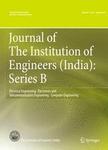版权所有:内蒙古大学图书馆 技术提供:维普资讯• 智图
内蒙古自治区呼和浩特市赛罕区大学西街235号 邮编: 010021

作者机构:Department of Computer Science and Engineering RMK College of Engineering and Technology Puduvoyal Thiruvallur India Department of Computer Science and Engineering RMD Engineering College Chennai India Department of Computing Technologies School of Computing Faculty of Engineering and Technology SRM Institute of Science and Technology Tamil Nādu Kattankulathur Chennai India School of Computer Science and Engineering Vellore Institute of Technology Chennai India
出 版 物:《Journal of The Institution of Engineers (India): Series B》 (J. Inst. Eng. Ser. B)
年 卷 期:2025年第106卷第2期
页 面:459-473页
核心收录:
学科分类:0810[工学-信息与通信工程] 12[管理学] 1201[管理学-管理科学与工程(可授管理学、工学学位)] 0817[工学-化学工程与技术] 08[工学] 0804[工学-仪器科学与技术] 0703[理学-化学] 0835[工学-软件工程] 0812[工学-计算机科学与技术(可授工学、理学学位)]
基 金:Not applicable
主 题:Extraction
摘 要:The increasing use of cloud-based image storage and retrieval systems has made ensuring security and efficiency crucial. The security enhancement of image retrieval and image archival in cloud computing has received considerable attention in transmitting data and ensuring data confidentiality among cloud servers and users. Various traditional image retrieval techniques regarding security have developed in recent years but they do not apply to large-scale environments. This paper introduces a new approach called Triple network-based adaptive grey wolf (TN-AGW) to address these challenges. The TN-AGW framework combines the adaptability of the Grey Wolf Optimization (GWO) algorithm with the resilience of Triple Network (TN) to enhance image retrieval in cloud servers while maintaining robust security measures. By using adaptive mechanisms, TN-AGW dynamically adjusts its parameters to improve the efficiency of image retrieval processes, reducing latency and utilization of resources. However, the image retrieval process is efficiently performed by a triple network and the parameters employed in the network are optimized by Adaptive Grey Wolf (AGW) optimization. Imputation of missing values, Min–Max normalization, and Z-score standardization processes are used to preprocess the images. The image extraction process is undertaken by a modified convolutional neural network (MCNN) approach. Moreover, input images are taken from datasets such as the Landsat 8 dataset and the Moderate Resolution Imaging Spectroradiometer (MODIS) dataset is employed for image retrieval. Further, the performance such as accuracy, precision, recall, specificity, F1-score, and false alarm rate (FAR) is evaluated, the value of accuracy reaches 98.1%, the precision of 97.2%, recall of 96.1%, and specificity of 917.2% respectively. Also, the convergence speed is enhanced in this TN-AGW approach. Therefore, the proposed TN-AGW approach achieves greater efficiency in image retrieving than other existing